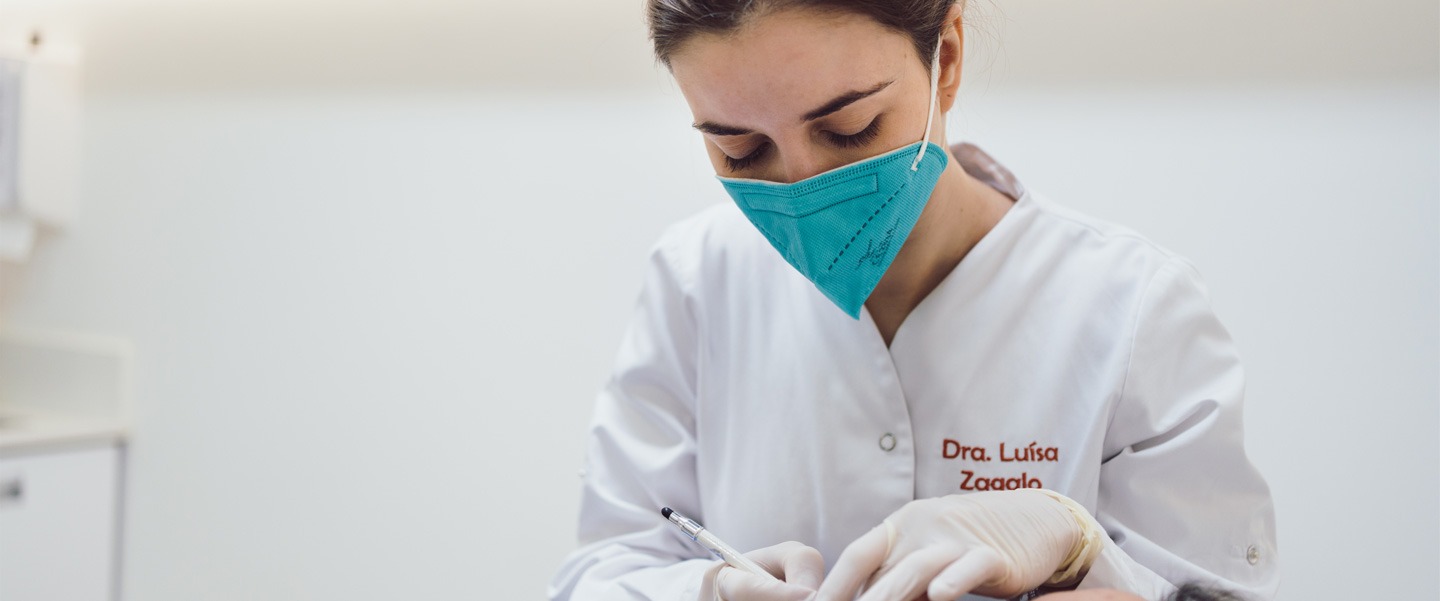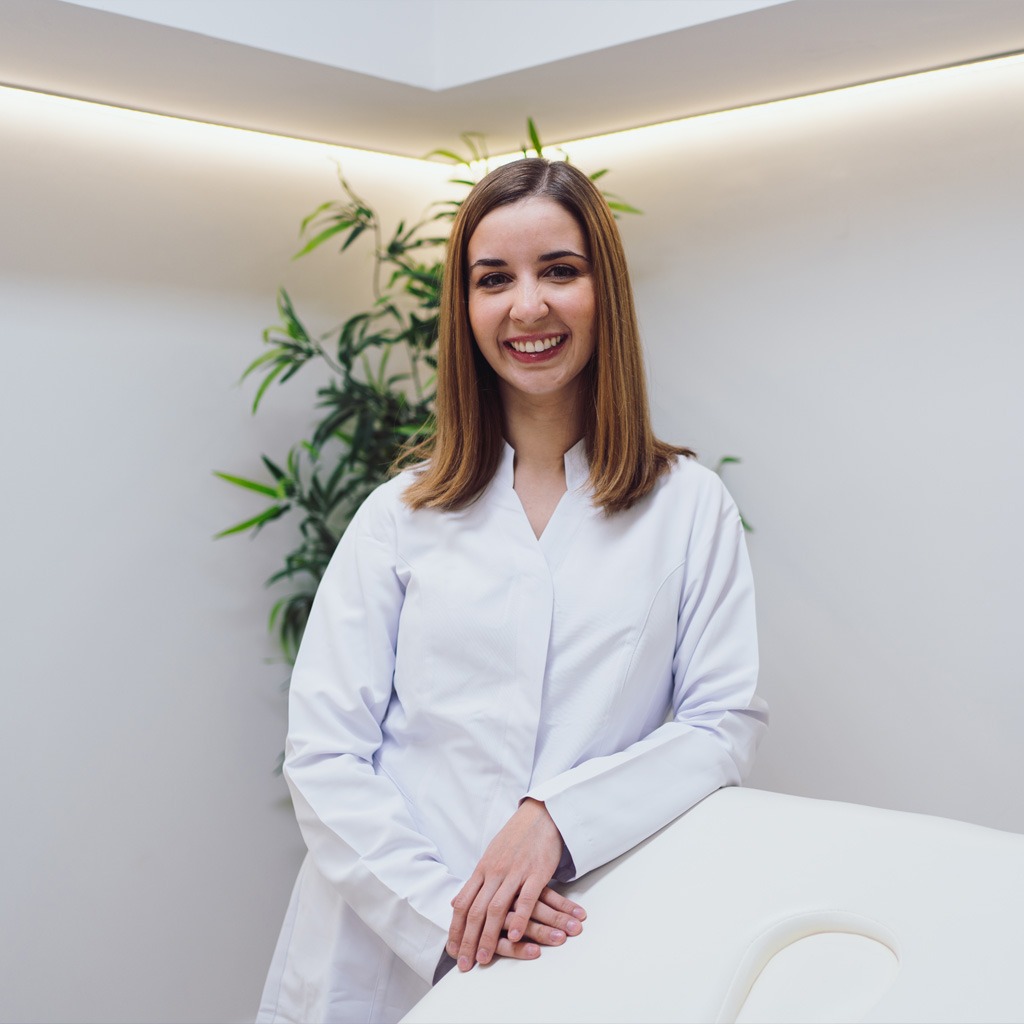Hyaluronic acid is one of the most widely used substances in aesthetic treatments aimed at improving the appearance of the face, giving it a more youthful and toned look. Find out how and why hyaluronic acid is able to guarantee noticeable and effective facial rejuvenation and why it is increasingly becoming an option for those who want to recover or preserve a youthful and firm face.
When and why should hyaluronic acid be applied?
The use of hyaluronic acid can have different motivations.
In the case of younger people, the application of this substance can be used for minor improvements to the face, such as filling in the lips or dark circles, correcting the profile, and so on. In addition, it is always a way of preventing premature ageing by moisturizing the skin, restoring small volumes and filling in lines or wrinkles.
When there are already signs of ageing, hyaluronic acid, along with other treatments, can offer excellent results. It is capable of supporting the skin, restoring contours and volume to the face and filling in wrinkles.
What are the main advantages of using hyaluronic acid?
The increasingly frequent use of hyaluronic acid is due to its many benefits, including:
- Restoring skin tone and firmness;
- Restoring volume to areas that have lost it;
- Moisturizing the skin;
- Smoothing out wrinkles and facial lines;
- Cover any unevenness;
- Restore skin support;
- Redefine the contours of the face;
- Bring harmony to the face.
All these positive aspects, when combined, ensure an overall more youthful appearance. This is why hyaluronic acid is increasingly becoming an option in aesthetic treatments aimed at facial rejuvenation.
How is hyaluronic acid applied to rejuvenate the face?
One of the possible ways of using hyaluronic acid is to inject it. In these cases, the following step-by-step procedure is followed:
- First, a conversation should be had with the patient in order to understand exactly what they want from the aesthetic treatment.
- Next, the clinical condition of the patient’s face is assessed.
- Next, the skin must be cleansed before the actual procedure.
- Afterwards, a topical anesthetic is applied to the area, which will make the whole process painless.
- Finally, hyaluronic acid is applied to the area to be treated.
There are two other options: creams and intradermal (gel) injections. While creams are applied topically, these injections are administered following the next step by step:
- Clean the area to be treated.
- Apply local or topical anesthesia.
- Inject the substance into the area to be treated, respecting the predetermined quantities.
As well as being a safe and virtually painless treatment, this procedure lasts an average of just 30 minutes.
In which areas of the body can hyaluronic acid be applied?
There are people who should not be treated with the collagen bio-stimulator.
This treatment is therefore contraindicated for people:
- people with allergies or hypersensitivity to the active ingredients of biostimulators;
- pregnant and breastfeeding women;
- with acute infectious diseases;
- with inflammation of the skin;
- cancers;
- a tendency to develop keloids and/or bleeding;
- with certain blood diseases (blood clotting);
- diseases of the immune system.
How long do hyaluronic acid treatments last on average?
On average, the effects of a facial filler with hyaluronic acid last between 6 and 18 months.
Its duration depends partly on the individual’s lifestyle, the place of application and the characteristics of the hyaluronic acid used.
Once the substance has been reabsorbed by the body, it can be reapplied to prolong its effects.
Frequently Asked Questions
Hyaluronic acid is a substance found in our bodies.
It helps moisturize the skin and contributes to the production of collagen, ensuring younger, firmer and more hydrated skin.
In aesthetic medicine, this acid is generally used for moisturizing and filling, as well as treating diseases such as joint problems.
In cosmetic products, this substance is widely used in topical creams. Hyaluronic acid can also be found in supplements.
This molecule, which our bodies produce, fills the spaces between skin cells and is able to retain a large amount of water. It is therefore responsible for the greater or lesser firmness and hydration of the skin, helping to rejuvenate this organ of our body.
It should also be noted that hyaluronic acid can also be found in the eyes, bones and joints.
In this field, there are two opposing methods: creams and injections.
Although creams complement and enhance the effects of various aesthetic treatments, they are not able to penetrate the skin in the same way and therefore, on their own, do not provide the same results in terms of volumizing and filling in wrinkles, or even moisturizing.
The effects of this treatment are immediate. However, due to the swelling, it is natural that the results will not be fully visible until two weeks after the treatment.
As hyaluronic acid is biocompatible, it is considered to be a very safe substance with only minor side effects, such as bruising, redness, swelling or mild pain.
These are, moreover, temporary reactions that can be alleviated with appropriate medication. Cases of allergic reaction are very rare.
Yes. There are some people who should not have hyaluronic acid treatment, such as:
- Pregnant women;
- Lactating women;
- Individuals with uncontrolled autoimmune diseases;
- People with known allergies or a history of severe allergic reactions (anaphylactic shock).
In any case, each clinical case must first be analyzed by a doctor, in order to consider whether or not the individual is in a position to undergo the treatment in question.
BOOK YOUR APPOINTMENT ONLINE
We reply within a maximum of 24 working hours.






